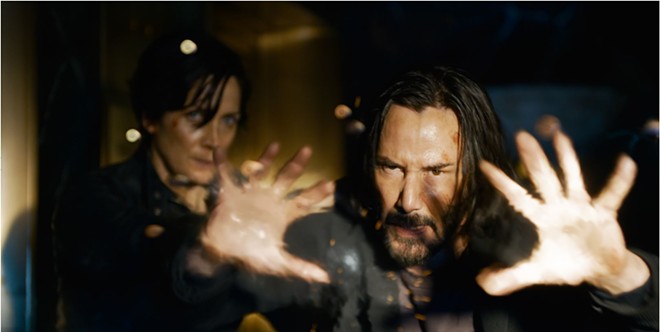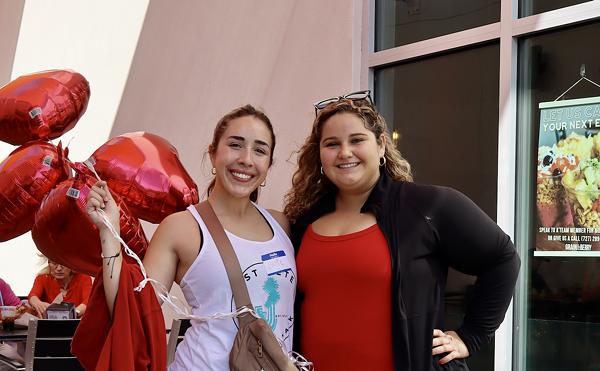
As such, it would be regarded as one of the most groundbreaking non-comic book, science-fiction/action hybrids ever made.
Yes, yes, I know, a whole slew of people freaking love “The Matrix,” and consider it an all-time classic. Hear me out.
The problem has always been the sequels.
2 out of 5 stars
Now Playing in theaters / Streaming on HBOMax
In hindsight, neither "Reloaded" nor "Revolutions" had anything new to say. They both failed to tell a story, or even coherently continue the story as laid out in the first film.
They were just snippets of ideas, flashes of inspired mayhem. They had some pretty parts and some thrilling sequences, but both sequels could have been combined into sections of a proper follow-up and no one would have noticed.
In my opinion, the sequels, especially “Revolutions,” have done nothing but blunt the impact of the 1999 original and turn it into a subpar franchise. "The Meh-trix," if you will.
Which brings us to the fourth entry, "The Matrix Resurrections," the first new film in 18 years, and also the first in the series to be solely directed by Lana Wachowski.
Lana isn't lacking for ideas, and for the first 45 minutes or so, you're hooked.
Thomas Anderson is alive, and a renowned video game designer who created a trilogy of globally beloved video games called "The Matrix." But there’s a fly in the ointment, a nagging suspicion that his gaming creations are alive and trying to communicate with him.
Forget Marvel’s multiverse. Lana thrusts us straight into a “Matrix” metaverse.
At first blush, it would appear as if Wachowski too might sense that the original trilogy didn’t conclude in a proper manner, which for a fan is a tantalizing proposition. I loved the early back-and-forth inside baseball name-checking Warner Brothers and dishing on the genesis of sequels as cash-grab enterprises. I loved watching Keanu Reeves stare wide-eyed into his past and struggle to make sense of his future.
But then the wheels start to wobble before eventually flying off the wagon, and suddenly “Resurrections” comes to a grinding halt, trapped by its own interminable loop of glitchy nostalgia.
Instead of saying anything new, Wachowski edits in flashes of past footage or recreates iconic moments altogether. She tinkers with established characters, replacing some (Morpheus and Agent Smith, most notably) with other actors who also don’t seem completely sure of how to get wherever it is Wachowski wants them to go.
She also transports viewers to a new resistance stronghold, which is very similar to the first resistance stronghold, Zion, which was attacked by the machines in “Revolutions.”
For me, Zion has always been the least exciting foothold in the entire “Matrix” construct. It’s a necessary component, for sure, but its very nature limits the characters when they are seen there in their “real” forms because they are less powerful than if they were still inside the Matrix.
To me, this is a quandary that also has vexed the “Star Wars” franchise. Yes, it’s important to see our heroes safe and secure in a place where they can plot their next moves, but it’s also more thrilling to see them out in the open, more vulnerable in some respects but also stronger too given the unpredictability that comes with being exposed.
“The Matrix,” as an idea, is thrilling because it represents a world without boundaries or rules. Anything can happen there. So why is it that the bulk of “Matrix” films exist far outside the actual Matrix instead of leaning all-in to the untapped possibilities of a digital world packed with limitless potential?
To that end, much like “The Matrix” was all about the effort to find Neo (Reeves) and help him recognize his role as savior and superman, the bulk of “The Matrix Resurrections” is about helping Neo rediscover his role and reignite his relationship with Trinity (Carrie-Anne Moss), despite the fact that both characters sacrificed all in “Revolutions.”
The problem with this, of course, is that 1) we’ve seen this story told better before and 2) what’s the point of making a new movie if all you’re doing is rehashing instead of creating new storylines, new crises and new adventures to behold?
It’s as if Lana and Co. simply don’t know what else to say about the Matrix, which is surprising given how many people in the past 18 years have come to firmly believe we’re actually living in a version of the Matrix.
It’s also surprising given how many parallels that exist in our society today with the onslaught of false information, the refusal by so many to accept basic facts as truth and our continued slide into a virtual existence where we cease having flesh-and-blood relationships in favor of superficial digital encounters that can be manipulated to make ourselves look far different than we really are.
I have to believe that Wachowski understands this as “Resurrections” is peppered with dialogue that would suggest that.
“They took my life and turned it into a video game,” Neo bemoans at one point to a new character, Bugs (Jessica Henwick).
“If we don’t know what’s real, we can’t resist,” she says in response.
Why Wachowski doesn’t do more to push those envelopes and create a more satisfying and sinister narrative is confounding.
At the end of the day, as a fan and as someone who feels a deep connection to the original film, I’m happy to follow the rabbit and swallow the red pill and take another trip deep into the mainframe. It’s comforting to see Neo and Trinity reunited because it feels like more than nostalgia. In the past two decades, we’ve come to realize just how special Reeves and Moss are, both as actors and as these characters.
But I also don’t think it’s too much to ask for there to be a purpose, a reason, an inspiration to revisit their continued struggle against the machines.
Otherwise, aren’t we all just complicit and compliant, trapped in our own suspended life pods, willing to accept without question when we’re spoon-fed reheated food and believing without question when we’re told it’s actually fresh?















